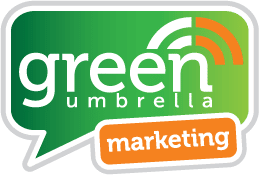Alive and Kicking in a GDPR Friendly Social Media World

Alive and Kicking in a GDPR Friendly Social Media World

Guess what? On the 25th May 2018, there wasn’t an apocalypse in the digital marketing world. Not only that, in spite of all those re-consent emails, the crap in my inbox does not seem to have died down. Not even a little bit!
Ok, so I have to admit I’ve always been a fan of the unsubscribe button, and I manage my inbox, so I am never inundated with marketing emails. But even so, with all the panic emails I received leading up to the 25th and the threats of me never hearing from that sender again following the deletion of my records… I did expect that the senders would keep their promises!
Social media and The GDPR
Living in a social media world, there were things we needed to do at Green Umbrella to ensure our compliance. However, the reality is, social media marketing in many ways gives us a protected area to work within. As a user, I have consented or opted in within Facebook, Twitter, LinkedIn, Instagram and the next time I log into Pinterest, I already know I’ll be clicking the yes button there too! If the people in my network I’m still seeing hadn’t also clicked to consent, or somehow opted in, they simply wouldn’t be there. At the end of the day, responsibility for The GDPR lies with the network. So I can market my heart out!
Facebook and The GDPR
Without going into too much detail, here are a few key points to consider when using Facebook:
1. Have you tried Facebook advertising?
The days of using Facebook without spending any money on advertising are well and truly over. (That’s another blog for another day.) So, if we’re going to spend money, let’s make every penny count. If you haven’t already, activate your Pixel. Think of this as Facebook’s equivalent to Google Analytics. Use Facebook as a tool for brand awareness, creating adverts that drive traffic to your website, then retargeting that website traffic through engaging posts that promote your products or services, building to a point where you convert business.
Action: Use of the Facebook Pixel should be included within your GDPR policy
2. Build an active following and keep them engaged
How many Facebook likes do you have? Reality is, this number is vanity. What I’m really interested in is what your reach was this week or how many people are seen as talking about your brand. It’s those stats that tell me whether your audience is engaged or not. If you have 100,000 likes – it doesn’t necessarily mean your content is being seen by any more Facebook users than a page with 50 likes! Or that your audience is any more or any less engaged! Facebook works for businesses that put the work in through interaction and engagement. You won’t get out what you don’t put in!
LinkedIn lead generation
Building your network on LinkedIn has never been more important for anyone in a B2B organisation. Whether you’re in a business development role or not, being present and correct is essential.
You’ve made your connections, you may even be proud of how many people exist within your network, but if you are not posting or interacting with the posts of your fellow LinkedIn users, then I’m sorry, you are not present and you will be forgotten soon after you make that connection. You’re just another name in a virtual address book. If you’re not sure you agree with me, start listing the LinkedIn connections in your head – don’t cheat and use the app… Can you remember every single name? The ones you did remember; I am willing to bet that there are few names outside of those who you regularly see in your feed and those you connected to recently.
I said you had to be present, AND correct. I don’t mean that every post must be 100% factual; I mean that your personal profile is correct! Branded, optimised, up to date. It shouldn’t be a hard ask, but take a quick look at your profile as if you were a prospect who has recently completed a search and stumbled across you. Would they click that connect button?
The thing I love most about LinkedIn is that sometimes, simply by looking at someone’s profile, we can garner their interest. In a training session recently, I demonstrated how they could create some awareness after creating a tiptop profile. I completed a search for my client’s target market using recruitin.net, opened my Google search, clicked on a random name, and stayed on that profile for a few seconds. Within the hour I had a connection request from that individual. Exactly as I had predicted! To get the best from this, you should visit ten profiles a day after carrying out the search.
What did I do next? I accepted the request and sent a message saying thanks for the connection, I was doing a search, and you popped up, and I thought your profile looked interesting. No sell. Just sending warm fuzzy vibes. The sell will come over time through my posting and sharing activity. I will be present in the feed of this connection.
Twitter Marketing
Twitter also offers opportunity, although the effects are in reality more subtle. Tweets are indexed by Google, so any activity here is feeding the machine that will allow us to perform better in Google search results.
For the moment, I am not a fan of paid advertising on the platform so I don’t encourage my coaching clients to implement the same strategy we use on Facebook, for example. However, I do encourage them to take a look at Twitter promote and trial it for a three month period. For some clients, this has worked fantastically, more so when they are focused on a local area or specific interest area, for those without a specific niche the results have been mixed.
Again, make sure you are present and active. Retweeting, engaging in conversation and offering a like here and there should be as much of a priority as sending your tweets. Oh, and please make sure you have added a link to your website on your profile and added a bio. What’s the point of attracting attention on Twitter and then keeping what we do and how to find out more a secret?!?
Changing our Email marketing habits to comply with The GDPR
At Green Umbrella, nothing has really changed! We use Mailchimp for email marketing. We have always had to include unsubscribe options before, so nothing new there. Our marketing emails have always gone through Mailchimp, so again no change. We use two-factor verification so we know we’re secure – no change needed again.
Ok. Yes, there is more to it than the things I’ve mentioned here, but in reality, we’ve always complied with a set of rules called PECR. So the shift to a GDPR compliant world has been minimal.
Whatever legal basis your business chose to move forward with, just make sure the first time you email that contact you have included a link to your privacy policy, a way for them to unsubscribe and update their profile. Also include why you are emailing them. Again, Mailchimp is a great tool to help you with all this.
My GDPR Warning
I realise a lot of this is very top level, and if you catch me at a moment when my self-control is lacking I can go into full rant mode. On any one aspect! However, here’s your warning. Please at all costs avoid talking to me about people who are describing themselves as GDPR experts. (Unless they work for the ICO!) I like to think I know a lot about it, but I am not an expert. My personal opinion is that outside of those working for the information commissioner’s office, who have directly worked on the development of the GDPR, it is impossible to be an expert until we have seen some case law.
If I manage to stay on top of the whole subject, in two years time, I will not cringe if someone calls me an expert on the matter. But that’s a big if – and in honesty, something else a bit more shiny and exciting is likely to have happened in the digital world before then!

Christina Robinson is the Managing Director of Green Umbrella Marketing. She provides Social Media Training and Coaching for a range of clients throughout the UK.
Share this!

